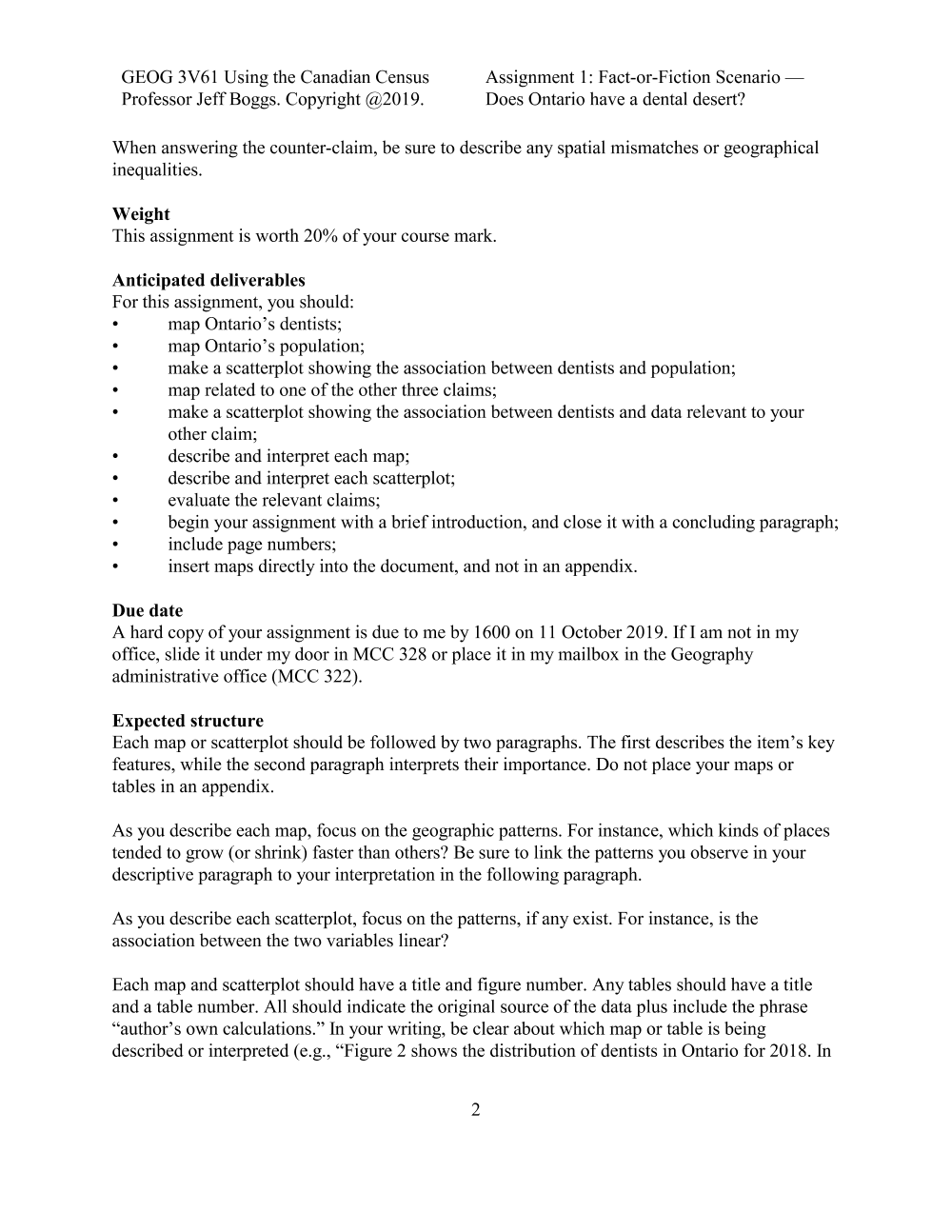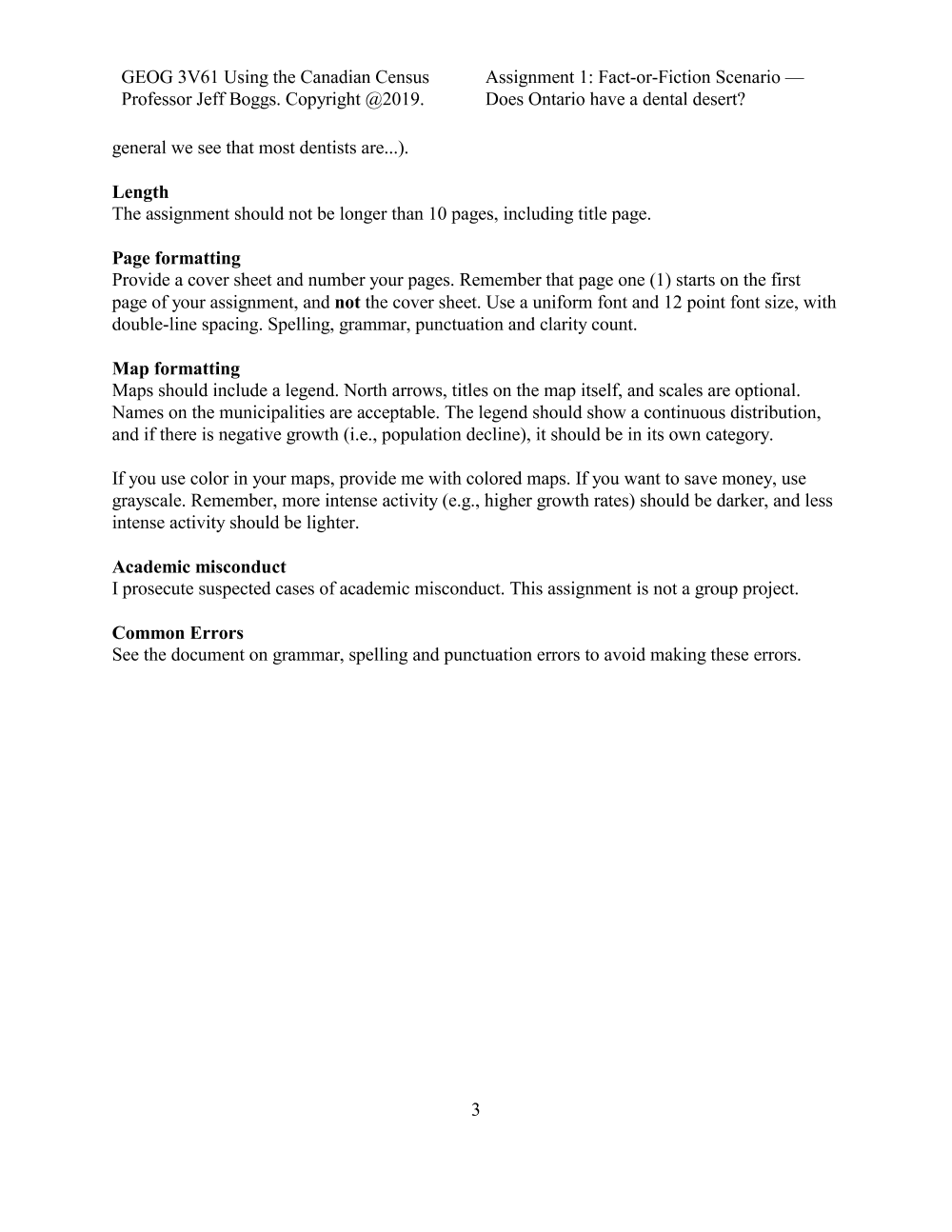- Home
- :
- All Communities
- :
- User Groups
- :
- Canadian GIS Professionals
- :
- Questions
- :
- Re: How do I calculate destination origin matrix i...
- Subscribe to RSS Feed
- Mark Topic as New
- Mark Topic as Read
- Float this Topic for Current User
- Bookmark
- Subscribe
- Mute
- Printer Friendly Page
How do I calculate destination origin matrix in ArcPro for Euclidean distance?
- Mark as New
- Bookmark
- Subscribe
- Mute
- Subscribe to RSS Feed
- Permalink
- Report Inappropriate Content
I need to create an origin-destination matrix using Euclidean distance. I have centroids for dissemination areas in Ontario (this is Statistics Canada Census and Longform survey data) and point data for dental offices in Ontario. Altogether there are about 20,150 DAs and ca. 7,500 dental offices. Thus, there are about 27,600 origins and destinations.
Does ArcPro have any native features to perform this operation? If not, what suggestions does the community have for this procedure?
- Mark as New
- Bookmark
- Subscribe
- Mute
- Subscribe to RSS Feed
- Permalink
- Report Inappropriate Content
There is a tool called Generate Origin Destination Cost Matrix
Looks like there are some special requirements but it may work for you
- Mark as New
- Bookmark
- Subscribe
- Mute
- Subscribe to RSS Feed
- Permalink
- Report Inappropriate Content
Hi Robert,
Thanks for the response. I have looked at the Generate Origin Destination Cost Matrix, but I though it required a network file. I'll look into this again, but I'm really interested in the Euclidean distance.
Regards,
Jeff
- Mark as New
- Bookmark
- Subscribe
- Mute
- Subscribe to RSS Feed
- Permalink
- Report Inappropriate Content
Have you just looked at
- per capita or per area values first like
- dentists/1000 people
- dentists/km^2 and people/km^2
It would be useful to see if there is a spatial threshold in the existing data first before getting into the distance data since Euclidean distance isn't going to be much use unless it is representative of existing travel networks... then you are getting into the network analyst's "service area" style questions.
- Mark as New
- Bookmark
- Subscribe
- Mute
- Subscribe to RSS Feed
- Permalink
- Report Inappropriate Content
Thanks for the thoughtful reply. Most of what follows deals less with distance-origin matrices and more with your suggestions about various rates.
With regard to the rates, I haven't explicitly shown my students how to calculate all these particular measures, though I think most of them already know how. In case you are interested, I've taken the liberty of posting the assignment. It is based on four labs, but for next year will probably extend it to five as I learn from this year's assignment.
Anyway, I have one actual question down below. I've tried to clarify things so you don't have to guess.


 I should preface this by noting that the labs leading up to the assignment suggest that in addition to mapping, they can also make scatterplots to show the association between the variables of interest. Also, I am learning ArcPro after having used ArcGIs for some years, but I would still think of myself as an intermediate user.
I should preface this by noting that the labs leading up to the assignment suggest that in addition to mapping, they can also make scatterplots to show the association between the variables of interest. Also, I am learning ArcPro after having used ArcGIs for some years, but I would still think of myself as an intermediate user.
Cachement areas of real existing dental offices
Thanks for your observations about the limitations of Euclidean distance. I developed this assignment (and measures of distance, generally) thinking in terms of Euclidean distance primarily because it was used lots when I was an undergraduate ca. 30 years agos AND it is easy to calculate with latitude and longitude (well in small batches, though now that I think about it, I might try to create a destination-origin matrix in Excel instead of using ArcPro; I just hoped ArcPro already had a feature for that).
You've given me pause to consider adding an additional lab for next year where we use the Generate Origin Cost Matrix tool to do this, as suggested by Robert, as I do have access to the Ontario road network layer.
Optimally, we would know empirically what the average commuting distance is for patients of the average dental office. We don't. In what I discuss below, we used 10 km as a simple default assuming this the maximum distance anyone would walk.
Population density
The dissemination area (DA) data provides both the population/km^2 as well as the population and area separately, and one of my students has already started to use that in a scatterplot as one of the axes.
Yesterday I believe one of my students did show a map of population density by DA. However, I'm not sure if all my students have thought to map population density as an alternate way to describe the population distribution in the province instead of a simple choropleth map of actual population. Implicit in your suggestion is that one could also compare the DA densities with the provincial population density. Nifty! I hadn't through about that. I'll suggest that to them, and point them to this conversation.
Measures using dental offices
The dentists/1000 measure is a bit more difficult to pull off at anything but the provincial scale. [For those interested, I acquired the dental office data from a DMTI Health Care file. A better data source would be the Ontario College of Dentists, but I need to learn how to automate website scraping before I can acquire that data.]
I initially had hoped that I could estimate the population within a 10km buffer of each dentist (as a crude indicator of likely patient base, though this makes less sense in rural areas) to estimate a potential number of patients per dental office. However, trying to figure out the origin-destination matrix solution [the original prompt for these posts] has eaten up all my time.
For what it is worth, here are my solutions for measuring the dental offices: population ratio.
Solution 1: I could attach each dental office to a DA, and determine a per capita measure for each DA or even per 1,000 residents, as Dan suggests.
However, the problem there is that DAs are probably too small to be a meaningful unit of analysis for the project (CSDs would make more sense, for instance). In this case I have backed myself into a corner because I wanted students to become familiar with DAs and the data available at that scale in the 2016 Census and Long form.
Solution 2: The next solution would be to estimate the population within 10km of each dental office. The easiest solution would be to make a buffer that captures all DA centroids within each dental office's 10km buffer.
The problem with this is that using centroids creates an all-or-nothing rule. Either all the DA population is assumed as potential patients, or none of them area. Still, this seems better than the first solution. Also, these procedures are within my wheelhouse.
Solution 3: Estimate the population within 10km of each dental office assuming equal population distribution by area. This is beyond my technical ability currently. It would allow DA's to contribute a portion of their population to a dental office's cachement. For example, if 30% of the area of a DA were within the 10km buffer, then that DA would contribute 30% of its population to that cachement.
Solution 4: Same as Solution 2, but use dissemination blocks (DBs) instead of DAs, assuming the data are available. The smaller size of the blocks might counteract the problems with centroids to better reflect the actual nearby population.
Solution 5: Same as Solution 3, but use dissemination blocks
Of the five solutions, this last one strikes me as the best as it is most likely to capture the actual population within the 10km buffer. Solutions 2-5 all suffer from the problem that we are not accounting for demand being fractured among dental offices with overlapping cachements. However, I have a vague recollection of seeing a possible solution for this problem, so I'm not too worried about that. Well, yet.
My question
What command in ArcPro would allow me to perform Solution 3? I don't need a full description of how to do it, just a nudge in the right direction.
- Mark as New
- Bookmark
- Subscribe
- Mute
- Subscribe to RSS Feed
- Permalink
- Report Inappropriate Content
First year without marking assignments.... can't say I miss it ![]() (retired Carleton U... )
(retired Carleton U... )
Re solution 3, might want to look at
Tabulate Intersection—Help | ArcGIS Desktop
with dental buffers and DA's... but I would have a look at the dental office overlaps since 10km may be a bit too much in urban areas
- Mark as New
- Bookmark
- Subscribe
- Mute
- Subscribe to RSS Feed
- Permalink
- Report Inappropriate Content
Wouldn't you want to limit the result somewhat? Is there a real need to get the distance from a dissemination area in BC to a dentist office in NFLD?
Are you looking for something like
Generate Near Table—Help | ArcGIS Desktop
which does warn that without a distance limiter, you can get an enormous list of results (many of which will be of questionable use).
- Mark as New
- Bookmark
- Subscribe
- Mute
- Subscribe to RSS Feed
- Permalink
- Report Inappropriate Content
Hi Dan,
Good questions! I have already limited this data set by limiting myself to dental offices in Ontario and DAs in Ontario.
I am asking because I've created an assignment where my students are determining if there is a 'dental desert' in Ontario. I need a distance-origin matrix (either the one including DAs and dental offices, or just the slightly smaller one including DAs) so I can show my students how to calculate a centroid-based measure of accessibility using the basic population potential equation. As such, I'm hoping to use ArcPro to generate the matrix that we can then export and plug into other software so we can then calculate the population potential. In this particular, lots of results aren't a problem per se (though it means we have to use something besides MS-Excel to calculate the accessibility of each point).
I have looked at the Generate Near Table (thanks for the link) but didn't think it created an origin-destination matrix. However, I'll look into it again and report back. I was planning on using this tool to find the location of the nearest dental office to each DA.
Thanks again for the response.
Regards,
Jeff